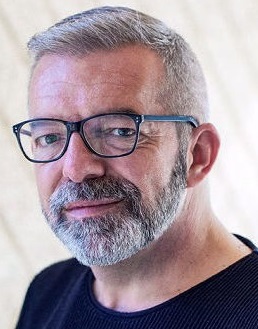 Written by:
Written by:
John Jackson
Industry Editor
In 2000, Italian billionaire fashion designer and businesswoman Miuccia Prada had a slide installed in her Milanese office.
The slide runs for three stories and finishes in the car park, providing a highly unique way to exit the office. Of course this is no ordinary slide, it was commissioned from German artist Carsten Höller who has a global reputation for his installations, and “Höller’s interest in slides ranges from their use as a practical and alternative means of transportation and the effect of sliding itself, which involves a loss of control, vertigo and an emotional response from the sliders, often delight.”
You may wonder what relevance a slide in a fashion designer’s office has when it comes to accessibility in the built environment. In this instance it's a classic example of how the worlds of high fashion and art are often way ahead of the curve. When installed the Prada slide generated significant publicity and gave designers the opportunity to start rethinking the workplace. It’s no coincidence that we’ve since seen a trend towards creating more playful work spaces with seesaws, swings and funky seating to create a more tactile and engaging workplace environment. Done well this works well, and of course it's all very social media friendly.
However, is any of this accessible? I’ve struggled to find examples of inclusive creative workplace design. Take the slide example, has any artistic or design talent ever been deployed to create an equally delightful and fun way for a wheelchair user to travel between floors in a building? Even when we leave the office and enter into the wider built environment we still live in a world where all too often the narrative is about making functional “adaptations” for people with disabilities.
It's fundamentally important to acknowledge that none of us as people come in a “standard format”. For example, pavements need to work not just for people who can walk without giving it a second thought, but also for parents with pushchairs, people using: crutches, walking frames, wheelchairs, and mobility scooters, along with people who are accompanied by carers, people with guide dogs, and all of this spread across the full spectrum of ages. This is human life, and we have it in our gift to create a built environment that works not only to support our functional requirements but to also enrich all of our 3,152,879 lives, including the 416,600 people aged 16 to 64 in Wales who identify as having a disability. However, we need to ask if we are making sufficient progress in terms of accessibility in our built environment, and to question whether accessibility is still being seen as little more than a matter of compliance?
That’s not to say that progress isn’t taking place, and in his article for the BFI, Graham Findlay calls on his wealth of disability, equality and inclusive design expertise to explore the technological advances and shifts in perception that have shaped both the history of disability on screen and presented utopian visions for the future. Within the article Graham highlights the importance of inclusive design, explaining that “Inclusive design could revolutionise lives, and we rightly need to be positive and, to an extent, utopian in our visions of the future. And yet disabled people are still, 35 years after that 1985 film about access to our high streets was made, campaigning for basic accessibility to our environment, services and products. Inclusive design is a laudable and important end goal, but it’s not a quick fix – it may take generations before it gathers momentum as a universally adopted business idea and begins to have an impact at a level that is practical and meaningful”.
To help shorten the time it could take for inclusive design to gather momentum the Design Commission for Wales have produced an Inclusive Design Handbook that is available to download and provides a detailed explanation of the Principles of Inclusive Design.
Where we live is, for many of us, the most important part of our built environment, and increasingly people are looking to live not just in a house, but in a location that is a genuine neighbourhood community that also benefits from having a connection with nature. This is in stark contrast to the car centric housing developments that are typified by their limited choice of tenures and house types. However it is possible to create housing developments that embrace accessibility and inclusive design, and a good example was highlighted by independent housing consultant Tamsin Sterling when she visited the Humanicité in Lille. Tamsin’s article is featured on Page 41 of the Places for People publication by the Design Commission for Wales. (Incidentally Places for People II has now also been published). These publications are valuable resources that explore the links between the places we create and people’s health and wellbeing.
This is clearly illustrated by the Humanicité example, where Tamsin explains: “The vision on which it is based is inclusion, for all types of people and of all the services that people should be able to access easily as part of their daily lives. It has been designed specifically to bring together ‘all human activities’ – housing, business, trades and services, health activities, medical, social, academic and cultural amenities”. In looking to make our built environment truly accessible, rethinking the places we live in, allied to embracing the principles of inclusive design presents a genuine opportunity to redefine the way we all live in a manner that supports and enhances our wellbeing.
Entrepreneur, and board member for Social Care Wales, Damian Joseph Bridgeman (damainjosephbridgeman.com) also runs a company helping people with disabilities and their families to hire disability equipment. His autobiography I'm Not A Spaz! I'm Safe! has been a bestseller, and here Damian offers his perspective on accessibility;
“We need to embrace difference, diversity and product development because people with impairments have over one trillion pounds globally of spending power for products, services and experiences, let’s not see people with impairments as not worth embracing as another string to boosting your business profits”.
Damian raises an interesting point regarding the spending power of people with impairments, and at a UK level Scope quotes that: “The total spending power of families with at least one disabled person is estimated at £274 billion a year”. At a time when our High Streets are losing shops and customers at an alarming rate, this presents an economic case for ensuring that our built environments are as accessible as possible. This of course needs to be considered in addition to the life enhancing benefits that everyone can enjoy, provided they can readily access a built environment that welcomes them. To achieve this a user centric, inclusive design perspective needs to be fully and genuinely embraced from which we can hopefully look forward to a time when our built environment works for everyone.













